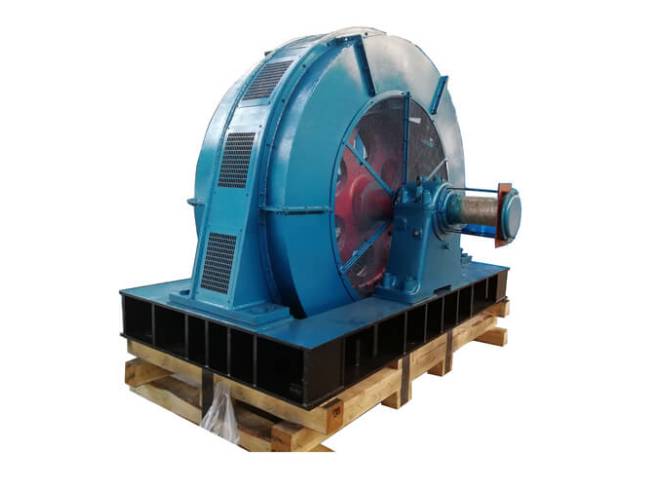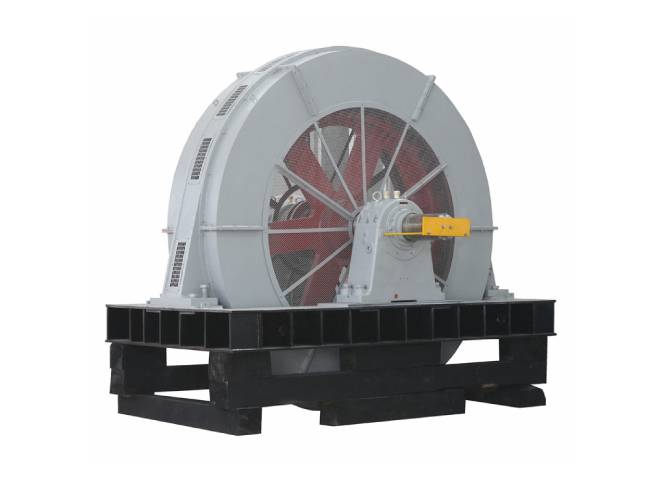A synchronous motor is an AC electric motor where the rotor rotates at precisely the same speed as the rotating magnetic field created by the stator, meaning it operates at a constant speed synchronized with the frequency of the power supply; essentially, the rotor "locks" in step with the stator's magnetic field, making it ideal for applications requiring precise speed control.
● Applications of synchronous motors
● How does a synchronous motor work
Most people know that electric motors use electricity to produce motion, but few know how many different ways there are to accomplish this task. There seems to be no need to create new ways to accomplish the same task, but engineers have good reason to do so. Some motors are driven by DC current, some by AC, and some by a combination of the two, with specific energy transfer methods that are unique to each motor. As a result, there are many types of DC and AC Motors, each with its own advantages in certain applications.

Synchronous motors are considered to be a type of AC motor specifically designed to address the limitations of induction motors, another prolific class of AC motor. Induction motors, as their name implies, use electromagnetic induction to generate mechanical energy; however, their main drawback is the "slip" phenomenon that occurs. This "slip" is the difference between the AC frequency of oscillation and the frequency of rotation, and is a direct result of using induction effects to produce rotation. Although not particularly important for most applications, because of this slip, ordinary induction motors cannot be used for precisely timed applications and are therefore called "asynchronous" motors.
Synchronous motors, on the other hand, are made so that the output rotational frequency is exactly equal to the input AC frequency. They can be used in clocks, rolling mills, and even record players because their speed is exactly proportional to the AC current supplying the motor. Although not as powerful or widely varied as induction motors, synchronous motors have an important place in any project that requires precise timing and accurate speed.
Want to buy a synchronous motor? Welcome to contact us.
The construction of a synchronous motor involves several critical components that work in unison to ensure smooth operation and efficiency. Below are the main parts of a synchronous motor and their functions:
The stator is the stationary part of the synchronous motor. It is constructed from silicon-steel stampings and features internal slots where the winding is placed. The stator plays a crucial role in generating the rotating magnetic field necessary for motor operation.
The stator winding is typically made from super-enamelled copper wire. This winding is arranged in a 3-phase star or delta connection and is inserted into the stator slots. The 3-phase AC power supply energizes the stator winding, creating a rotating magnetic field.
The rotor is the rotating component of the synchronous motor. It is cylindrical and consists of poles on its outer surface. Like the stator, the rotor is made from silicon steel stampings to enhance magnetic properties and reduce energy losses.
The rotor winding is made from enamelled copper wire, wound around the poles of the rotor. This winding is energized by direct current (DC) supplied by the exciter, creating the necessary magnetic field to lock the rotor to the stator's rotating magnetic field.
The exciter is a small-capacity DC shunt generator mounted on the same shaft as the rotor. As the motor operates, the exciter generates DC power, which is supplied to the rotor winding. This self-sustaining mechanism ensures a continuous supply of excitation current.
Synchronous motors are equipped with two slip-rings made of phosphor bronze, mounted on the rotor shaft. Carbon brushes maintain constant contact with the slip-rings, allowing the transfer of DC excitation from the exciter to the rotor winding. This arrangement ensures a smooth and efficient transfer of power.
1. Synchronous motors are not self-starting by nature. They require some external means to bring their speed close to the synchronous speed before they can be synchronized.
2. Their operating speed is synchronized with the power supply frequency, so they behave as constant speed motors at a constant power supply frequency, regardless of the load conditions.
3. This motor has the unique characteristic of being able to operate at any power factor. This allows it to be used to improve the electrical power factor.
1. Since a synchronous motor can operate at leading and lagging power factors, it can be used to improve power factors. Synchronous motors have a leading power factor at no load and can be connected to power systems where static capacitors cannot be used.
2. It is used where low speed and high power is required. Such as mills, chippers, agitators, pumps, pumps, compressors, etc.
Like other Induction motors, synchronous motors consist of an external stator and an internal rotor, which produce output torque by magnetic action. Just like other AC motors, synchronous motors can be powered by a single-phase input, or a multi-phase input, depending on size and application.
Synchronous motors have the same stator as other induction motors, with copper/aluminum coils running through a laminated metal plate. These coils carry AC current and produce a rotating magnetic field. They differ most in their rotors, which contain a permanent magnetic field, generated either by an actual magnet or by a DC power source passing through the rotor coils. This permanent magnetic field has its own set of north and south poles that will eventually align with the poles of the RMF, resulting in a precisely rotating output proportional to the stator frequency. These poles can either protrude from the rotor surface or be contained in slots on the rotor; these are called protruding and non-protruding pole rotors, respectively. There must be some excitation to start though, as the speed difference between the stationary rotor and the fast RMF will not allow their poles to lock at start-up. This is achieved in a different way and therefore synchronous motors are divided into non-excited synchronous motors and current-excited synchronous motors.
A synchronous motor is a double excitation machine, i.e. it is supplied with two electrical inputs. Its stator winding consists of a 3-phase stator winding and a rotor winding of DC current. The 3-phase stator winding carrying the 3-phase current produces the 3-phase rotating flux. The rotor carrying DC power also generates a constant flux.
At a given moment, the polarity of the rotor and stator may be the same, leading to a repulsive force on the rotor, while at the next moment, it will be N-S, leading to an attractive force. However, due to the inertia of the rotor, it cannot rotate in any direction due to attractive or repulsive forces and the rotor remains at rest. Therefore, a synchronous motor is not self-starting.
Here, some mechanical means can be used to initially rotate the rotor in the same direction as the magnetic field, at a speed very close to the synchronous speed. Once the synchronous speed is reached, magnetic locking occurs and the synchronous motor continues to rotate even after the external mechanical means are removed. Get a free quotation.

Synchronous motors can be distinguished according to the way their rotors are excited to synchronous speed, with non-excited synchronous motors and current-excited synchronous motors.
These synchronous motors do not require an excitation voltage to start and use ferromagnetic material in their rotors to interact with the stator. They are available in three main designs: hysteresis motors, synchronous reluctance motors and permanent magnet motors, each of which will be briefly described below.
Hysteresis motors use a rotor shaft contained in some non-magnetic material which has a layer of ferromagnetic material wrapped around it, forming a "hysteresis ring". The stator RMF induces two poles in this ring, but due to some loss of hysteresis - or loss of energy due to the hysteresis between the magnetization of the ferromagnet and the changing flux - the rotor flux will lag behind the stator flux. This hysteresis causes an angular separation between the rotor magnetic field and the stator magnetic field, resulting in torque. These are relatively noiseless motors and are best suited for record players, tape recorders and other audio equipment.
Magnetoresistive motors use magnetic attraction and magnetoresistance phenomena to generate motion. They are similar in design to stepper motors and induction motors, where the stator consists of prominent poles of a coil that produces a magnetic field. The rotor is made of ferromagnetic metal and is shaped like a modified squirrel cage. The rotor has recesses, barriers or slots that align with the magnetic field lines of the stator when the rotor and stator poles are matched. When mismatched, the magnetic field takes a longer path through the rotor and causes the magnetoresistance - a magnetic force similar to resistance - to increase. This creates a reluctance torque on the motor as the rotor wants to reach some lower reluctance, or return to its aligned position. This allows the rotor to be "pulled in" to synchronous speeds in some designs, providing precise rotational output.
Unsurprisingly, permanent magnet motors use permanent magnets in their rotors to produce a constant magnetic flux. This interacts with the stator RMF pole and results in a rotating output. These motors must be controlled with a variable frequency drive because the only way to change their speed and torque is to change the AC frequency of the stator.
The only major current-excited synchronous motor is the DC-excited synchronous motor, which requires a DC input and an AC input. DC power enters the rotor, which contains windings similar to those of the stator, and these windings will produce a constant magnetic field induced by the DC power supply. This will excite the motor and align its poles with the RMF of the stator, causing synchronization. These motors are usually found at >1hp and are often referred to as synchronous motors because of the prevalence of this rotor design.
It may sound like synchronous motors are the next best thing to induction motors, but without them, we would not have clocks, record players, windshield wipers, hard drives, signaling equipment, recording instruments, microwave boards, or any other timing devices. Again, the efficiency of these motors helps correct the inefficiencies of induction motors and provides a way to correct distribution losses. They are invaluable to industry both in their ability to correct power and in their accuracy, and although more expensive and complex than induction motors, synchronous motors are another capable machine that designers can utilize.
This article describes what Synchronous Motors are and how they work, including the principles and applications of synchronous motors, I hope the above sharing will be helpful to you. For more information on related products, please feel free to contact us.
Copyright © ZCL Electric Motor Technology Co., Ltd. All Rights Reserved | Sitemap | Powered by 